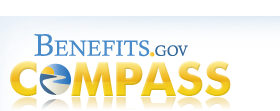



Inside This Issue
A Message From Al Sloane, Benefits.gov Program Director
Managing Unemployment: A Primer for Applicants
Learning About Government Financial Assistance Series: Federal Student Aid
Keep Your Home Warm and Your Bills Low This Winter
Spotlight on HIV/AIDS
Announcing the Benefits.gov YouTube Channel
Benefits.gov Buzz
Stay Connected to Benefits.gov
Find What You're Looking For on Benefits.gov – Fast
Benefits Summary

About Us
About Benefits.gov
Benefits.gov Partners
About GovLoans.gov


|
| A Message From Al Sloane, Benefits.gov Program Director |
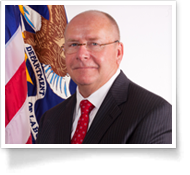 |
On behalf of the Department of Labor and the 17 partner agencies who support Benefits.gov – we wish you a very happy and healthy new year. As 2012 drew to a close, our mission of providing citizens with a single, online source for government benefit information gained even greater importance after Hurricane Sandy came ashore on October 29. Shortly after, our website experienced a 25 percent increase from normal site traffic. We are so proud to have helped fellow citizens in their time of need, and throughout the year by keeping information current and expanding the number of benefit programs on our site. We recently added initiatives sponsored by two Benefits.gov partner agencies: the Department of Veterans Affairs’ Veterans Retraining Assistance Program and the Office of Personnel Management’s Flexible Spending Account for the Federal Government. And, speaking of new features, we recently launched the Benefits.gov YouTube channel – click here to read all about it.
I hope you enjoy the first edition of the 2013 Compass. We welcome your input – click here to share your feedback with us. And, we hope you’ll “Like” us on Facebook, Follow us on Twitter, and subscribe to our YouTube channel.
|
Back to Top
 |
| Managing Unemployment: A Primer for Applicants |
 |
If you have become recently unemployed, help is available to get you through this tough time. File for unemployment benefits through your state employment agency. It’s best to file as soon as possible after losing your job because it may take a few weeks to process your claim. Surprisingly, the U.S. Department of Labor reported that out of 12.3 million jobless Americans, just five million received state or federal benefits for the week ending November 24, 2012. That equals roughly 26 weeks of unemployment benefits. On the other hand, not everyone who applies for unemployment benefits receives them. For instance, getting fired for misconduct or quitting without a legitimate reason will mostly likely deem you ineligible for benefits.
The following resources provide information about the types of unemployment benefit programs currently available, and how you may apply:
- Federal-State Unemployment Insurance is administered by states within guidelines established by federal law. This program provides unemployment benefits to eligible workers who are unemployed through no fault of their own (as determined under state law), and meet other eligibility requirements of state law.
- Disaster Unemployment Assistance provides financial assistance to individuals who have become unemployed as a result of a Presidentially-declared major disaster.
- Unemployment Compensation for Federal Employees provides benefits for eligible unemployed former civilian federal employees.
- Unemployment Compensation for Ex-Service Members provides benefits for eligible ex-military personnel, as well as former members of the National Oceanographic and Atmospheric Administration and U.S. Public Health Service Commissioned Corps.
- Extended Benefits are available to workers who have exhausted regular unemployment insurance benefits during periods of high unemployment. This can amount to 13 additional weeks of benefits when a state experiences high levels of unemployment.
- Self-Employment Assistance enables unemployed workers to create their own jobs by starting their own small businesses. Under these programs, states pay participants a weekly self-employed allowance, in lieu of regular unemployment insurance benefits to help unemployed workers while they are establishing businesses. To date, states with active programs include Delaware, Maine, New Jersey, New York, and Oregon.
Finally, if you receive unemployment benefits, you must report this as taxable income on your tax return. The IRS’ Volunteer Income Tax Assistance (VITA) Program offers free tax help to people who cannot afford professional assistance.
Benefits.gov houses program eligibility and application information that is specific to each state’s Unemployment Insurance program. To find out if you are eligible for Unemployment Insurance, click “Start Now” on the homepage to use our simple and confidential Benefit Finder.
|
Back to Top
 |
| Learning About Government Financial Assistance Series: Federal Student Aid |
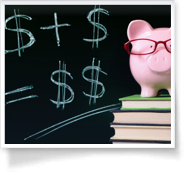 |
In our continuing series about government financial aid, we first presented an article about grants vs. loans in October’s Compass. With college admission letters beginning to arrive in millions of mailboxes across the country, Benefits.gov is turning our attention to federal student aid to help familiarize perspective college students and their families about the options available to them.
Federal student aid programs are available to eligible students enrolled in college or career school in three main forms: grants, loans, and work-study. A financial aid package includes the total amount of federal and non-federal financial aid offered by a college or career school to help a student pay their education costs.
Getting Started - Free Application for Federal Student Aid (FAFSA) – You must complete the FAFSA before applying for federal student financial aid. For the 2013–2014 academic year, students may apply starting on January 1, 2013 through June 30, 2013. FAFSA covers the entire academic year, so students must apply annually. If possible, submit the form early since there are several first-come, first-serve federal student aid programs – see student aid deadlines. Apply online or order a paper copy of the FAFSA application by calling 877-433-7827 or email edpubs@edpubs.ed.gov. The June 30, 2013 deadline remains the same for online and paper applications.
Student Aid Categories – After completing the FAFSA, students may apply for three main forms of federal student aid, as follows:
- Federal Grants - A grant is an award of financial assistance that varies by amount and eligibility requirements, and need not be repaid. Pell Grants are federal needs-based awards offered to low-income undergraduate and certain post-baccalaureate students.
- Federal Student Loans - The Department of Education, a Benefits.gov partner, offers eligible students at participating schools Direct Subsidized Loans and Direct Unsubsidized Loans. These loans differ from private loans and offer such benefits as fixed interest rates and income-based repayment plans, while private loans are generally more expensive than federal student loans and may have more restrictions. Click here to view a chart summarizing the differences between the two.
- Federal Work-Study – Work-study programs offer part-time employment (often in the individual’s chosen field) to eligible students while enrolled in school.
Now that you know the basics about federal student aid, continue your journey on our homepage by using these resources to expand your search:
- Benefit Finder – Click “Start Now” to begin our confidential eligibility questionnaire. Your answers instantly generate a list of benefits tailored to your specific needs across 20 assistance categories.
- Browse Benefits – If you have a specific need, select "Benefits" at the top of the page to browse benefit and assistance programs by category, state, or federal agency.

|
Stay Informed – On July 1, 2012, several legislative changes went into effect regarding federal student financial aid - click here to learn more. |
|
Back to Top
 |
| Keep Your Home Warm and Your Bills Low This Winter |
 |
Your home uses energy to keep you warm in the winter and cool in the summer. All combined, heating and cooling comprise nearly 54 percent of home energy use and are the largest energy expenses in the average American home. Benefits.gov has energy-saving tips to help you keep warm this winter, at a lower cost.
First, if you’re having a tough time paying your energy bills, help is available. Check out the Low Income Home Energy Assistance Program (LIHEAP) offered by the U.S. Department of Health and Human Services (HHS), a Benefits.gov partner. This program assists eligible low-income households with their heating and cooling energy costs, and, if the state chooses, to weatherize homes. Individuals interested in applying for energy assistance should contact their state/local LIHEAP agency – click here to find your state. You may also be eligible for the U.S. Department of Energy’s (DOE), another Benefits.gov partner, Weatherization Assistance Program for Low-Income Persons, the nation's largest residential energy efficiency initiative. This program helps homeowners insulate homes and conserve energy in their communities.
Second, here are a few do-it-yourself tips proven to save energy - and money - at home:
- Weatherstrip Air Leaks. This means sealing windows, skylights and doors with caulking from your local hardware store.
- Seal Air Duct Leaks. Air ducts are one of the most important systems in your home. If the ducts are poorly sealed or insulated, it’s likely they’ll contribute to higher energy bills - read the Energy Departments tips for sealing your air ducts.
- Remove Your Window AC. By removing the unit and sealing the window, you will save energy while blocking those freezing drafts.
- Install a Programmable Thermostat. This device enables you to set the proper temperatures when you’re home and away. Turning your thermostat back 10-15 degrees for 8 hours can save 5-15 percent a year on your heating bill, according to the Energy Department.
- Check Your Heating System Regularly. Proper furnace maintenance saves money, conserves energy, and prevents costly repairs in the future. Also, check and clean your heating system filters regularly to maintain proper airflow.
Third, you can find long-term savings tips in the Energy Savers Booklet provided by the Department of Energy. And, visit EnergySavers.gov to learn more about the best way to warm your specific type of home.
Benefits.gov wants you and your family to save on energy costs year-round. Use our confidential Benefit Finder to search for additional energy-saving government benefits you may be eligible for. |
Back to Top
 |
| Spotlight on HIV/AIDS |
 |
Twenty-five years ago, World AIDS Day was observed on December 1 to raise awareness about the deadly disease. Today, this annual event is held in countries around the world, and while much has been done to combat and prevent the spread of HIV/AIDS, the Center for Disease Control (CDC) reported that in the U.S alone, approximately 50,000 people contract the disease annually. Given these statistics, raising awareness about the disease is critical. Benefits.gov stands ready to help citizens impacted by HIV/AIDS. You can find services for persons living with HIV/AIDS through the Ryan White HIV/AIDS Program, and you can take the Benefit Finder to locate a list of government benefits tailored to your needs. When taking the questionnaire, check the box for HIV/AIDS benefits and all the categories of benefits you may need. Alternatively, you can browse the HIV/AIDS benefits listed on the site.
The White House is also doing its part to create an “AIDS-free generation” and released the National HIV/AIDS Strategy in 2010. Under this initiative, the U.S. Department of Health and Human Services, a Benefits.gov partner, launched *AIDS.gov – an online clearinghouse for HIV/AIDS information geared towards those diagnosed with the disease, at-risk groups, caretakers for HIV/AIDS positive individuals, and professionals working in the community.
Visitors to AIDS.gov can learn about the different types of HIV tests, including urine and mouth swabs (some HIV tests can even be conducted without drawing blood). Information about confidential and anonymous testing and at-home testing kits is also readily available. If you are at risk of contracting HIV, you should get tested. The CDC reported that 1 in 5 Americans are unaware they are infected with the disease. You can find testing and prevention services in your area by using the AIDS.gov provider locator.
If you’ve recently been diagnosed with HIV, it’s important to learn about the virus, identify available resources, develop strategies for living with HIV/AIDS, and find help in your community through the AIDS.gov provider locator. Living with HIV/AIDS or caring for someone with the disease presents many challenges, nonetheless, being alone shouldn’t be one of them. Click here to connect with a huge support community who can help.
*AIDS.gov is not fully translated; however, you can find HIV/AIDS information in Spanish by visiting AIDS.gov: http://aids.gov/federal-resources/espanol/
|
Back to Top
 |
| Announcing the Benefits.gov YouTube Channel |
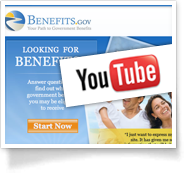 |
As part of celebrating Benefits.gov’s 10th anniversary of citizen service, we are pleased to offer you a new and exciting way to stay connected with Benefits.gov: our YouTube channel featuring our first tutorial video.
You can learn how to get the most value out of using Benefits.gov by visiting the official Benefits.gov YouTube channel at www.youtube.com/BenefitsGOV. If you already have a YouTube account, you can subscribe to the Benefits.gov YouTube channel by clicking the “Subscribe” button at the top of the channel page. Subscribing allows you to receive notifications when new videos are posted and provides easy access to your favorite Benefits.gov videos. Even if you do not have a YouTube account, you can still view the informative and helpful videos about the Benefits.gov site and its features any time.
The Benefits.gov YouTube channel currently showcases a self-help video about the site’s confidential prescreening tool, the Benefit Finder. The Benefit Finder Tutorial video is a step-by-step visual guide designed to help you better understand how the tool functions. This short, informative tutorial also aims to help answer common questions you may have while using Benefit Finder.
We hope the Benefits.gov YouTube channel will assist you on your path to finding and applying for government benefits. Check back with us soon for more self-help tutorials for additional site features. We also encourage you to visit us on Facebook and Twitter to make Benefits.gov a part of your social network, while connecting with family, friends, coworkers and others with shared interests.
|
Back to Top
 |
Benefits.gov Buzz |
 |
The following publications recently featured Benefits.gov as a valuable resource for citizens. To read the full story, click on the article title below or "Read more…"
Benefits.gov debuts on YouTube
The Washington Post
“The main portal for information about government-provided benefits has launched a channel on YouTube, with the initial video being a tutorial on how to use the site, Benefits.gov…”
Read more…
The E-Gov Act at 10 years
FCW.com
“People can go to Benefits.gov to complete a free and anonymous survey that will provide them with a list of the benefit programs for which they are eligible…”
Read more…
Hurricane Recovery Assistance
Dol.gov
“The U.S. Department of Labor is assisting in the recovery efforts in communities affected by this season's hurricanes…”
Read more
See what our Facebook Fans are posting about us and what our Twitter Followers are retweeting.
Facebook.com/BenefitsGOV:
Facebook Shares
Interested in receiving our eNewsletter? You can easily subscribe by clicking "Subscribe to Benefits.gov Compass" on the top right of the page: http://bit.ly/gQIZe2
This Thanksgiving was a day to reflect and take stock. As 2012 draws to a close, there are many things to give thanks for, including... tiny.cc/cosjow
Twitter.com/BenefitsGOV:
@BenefitsGOV: Have you or a loved one been affected by #Sandy? Go to DisasterAssistance.gov from your smartphone to find & apply for disaster relief.
Retweeted by 6
@BenefitsGOV: Looking for financial assistance? Benefits.gov can help, but first you should know some basic facts. Read: http://tiny.cc/q3zqmw
Retweeted by 6, 6 Favorites
@BenefitsGOV: October is Breast Cancer Awareness Month. Read this Benefits.gov article about life-saving programs for women: http://tiny.cc/pf5kmw
Retweeted by 25, 2 Favorites
|
Back to Top
 |
| Stay Connected to Benefits.gov |
 |
Benefits.gov wants to keep citizens updated on all government benefit and assistance programs. It’s easy to stay connected to Benefits.gov – here’s how:
Email Updates
Enter your email address in the box provided under "Subscribe to Benefits.gov Email Updates" on our homepage and select the Benefits.gov pages that interest you. You can also click "Subscribe to email updates" on any page to receive emails about changes to a specific program.
eNewsletter Subscription
Benefits.gov Compass is our free eNewsletter featuring important news and updates about government benefit programs and initiatives. Sign up now and start receiving Benefits.gov Compass every three months, and don’t forget to tell your friends and family.
Follow Us on Twitter, "Like" Us on Facebook, Subscribe to our YouTube channel!
Follow Benefits.gov on Twitter, "Like" us on Facebook and subscribe to the Benefits.gov YouTube channel and receive our benefit-related updates, news and information.
Share Benefits.gov
Use our "Share" button on the top right corner of our site to post any Benefits.gov page through any of your email or social media tools.
Link to Us
Linking to Benefits.gov helps raise awareness about the official benefits website of the U.S. government–providing visitors with instant access to over 1,000 federal and state benefit and assistance programs. To place a link to us in a readily visible area of your website (such as on your homepage or in your site footer), visit our Link to Us page.
|
Back to Top
 |
| Find What You're Looking For on Benefits.gov – Fast |
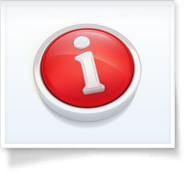 |
We offer four different ways to find benefit information quickly and easily. Read on to learn which of the four search features works best for you, and remember–the only way to check your potential eligibility for the programs listed is through our simple prescreening tool, the Benefit Finder.
- Search Field
How it works. Enter either the name of a program, part of it, or a keyword that describes what you’re looking for. The search field is located at the top right of the website on every page. Like any other search engine, enter your keyword and click “Search.” This feature searches the Benefits.gov site and provides relevant results for your word or phrase, and creates a list of “Related Searches” at the bottom of your results.
- Browse by Category
How it works. Go to “Benefits” in the top navigation of the site and click “By Category” in the drop down menu that appears. Read through the 20 benefit categories and select your topic of interest.
- Browse by State
How it works. Go to “Benefits” at the top of the site and click “By State” in the drop down menu that appears. Or click the state name listed below the interactive U.S. map. Either way, you will be taken to a list of benefit programs offered in that state.
- Browse by Federal Agency
How it works. Go to “Benefits” at the top of the site and click “By Federal Agency” in the drop down menu that appears. Browse the federal agencies listed and select the agency of your choice to see a list of benefits offered by that organization.
|
Back to Top
 |
| Benefits Summary |
 |
Federal Student Aid
HIV/AIDS
Miscellaneous
Saving Energy
Tax Preparation
Unemployment Insurance
|
Back to Top |
|

